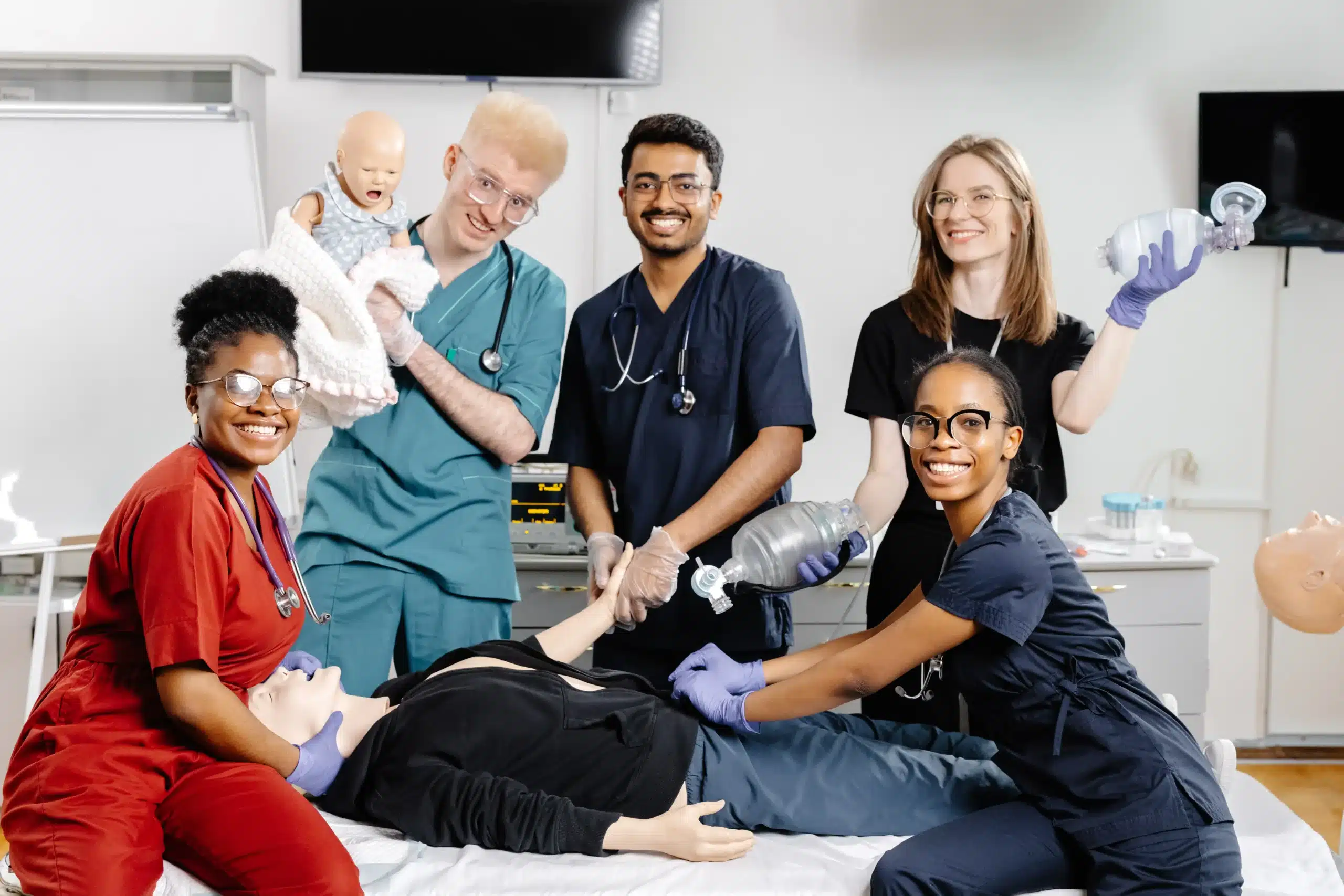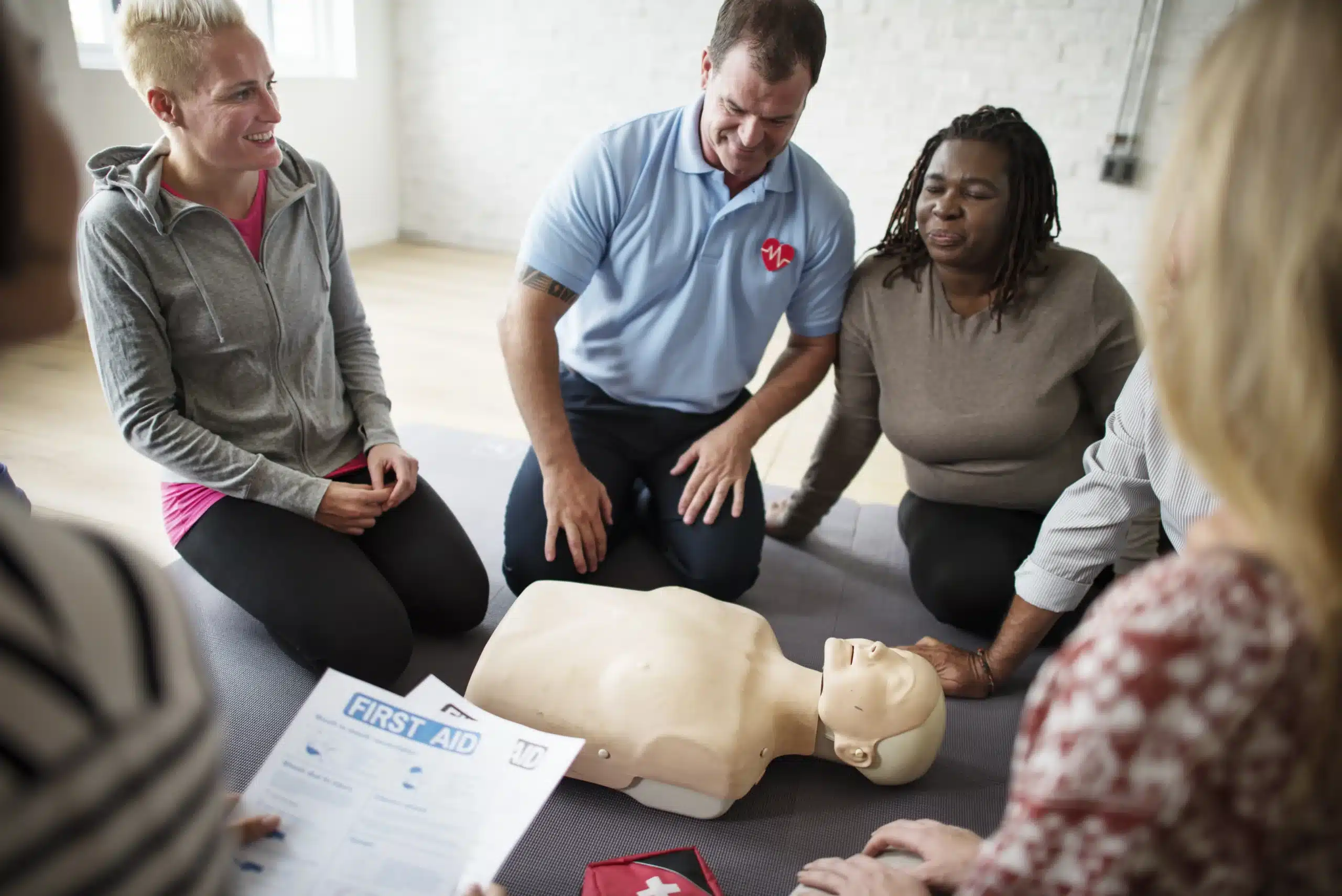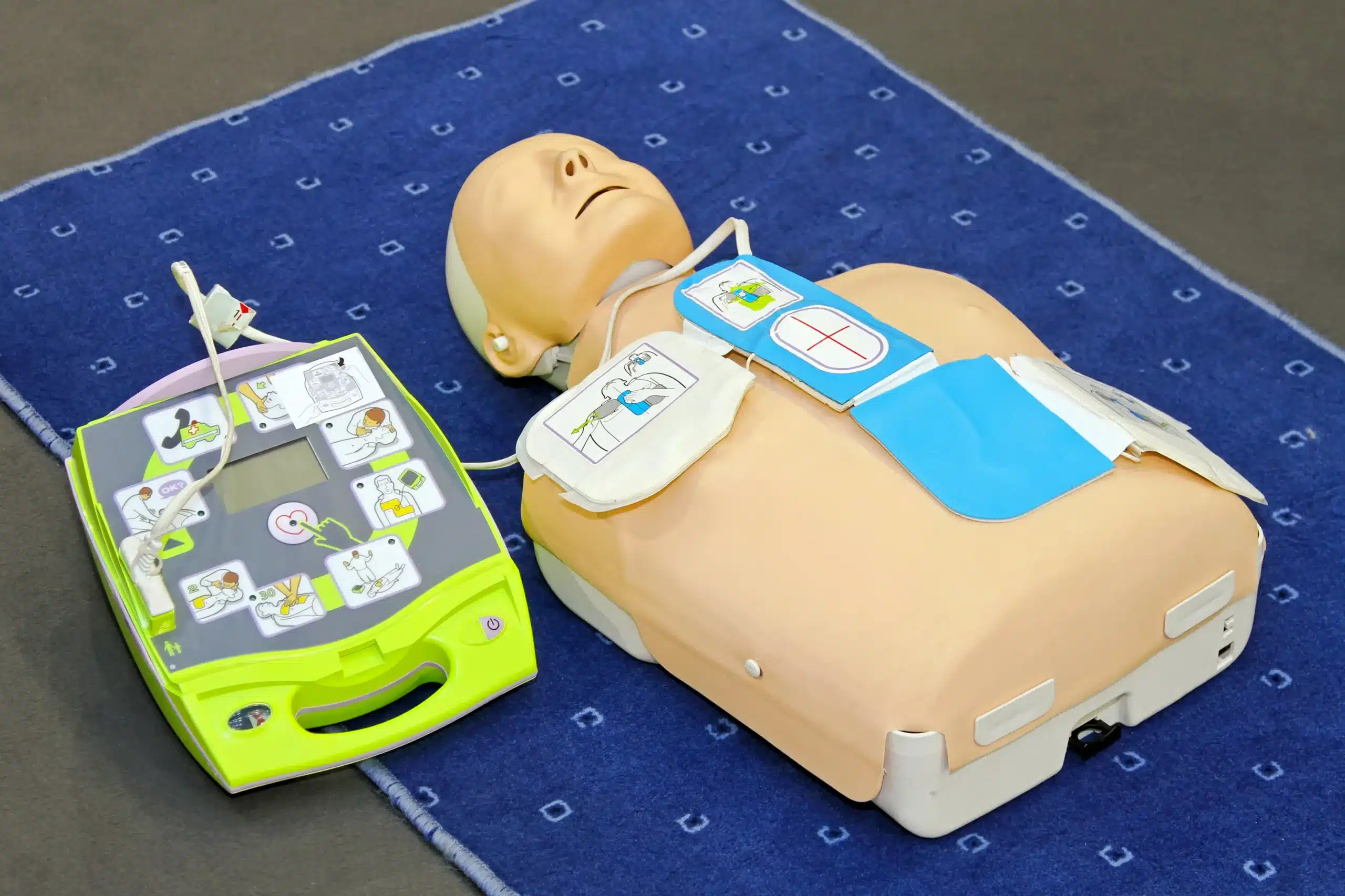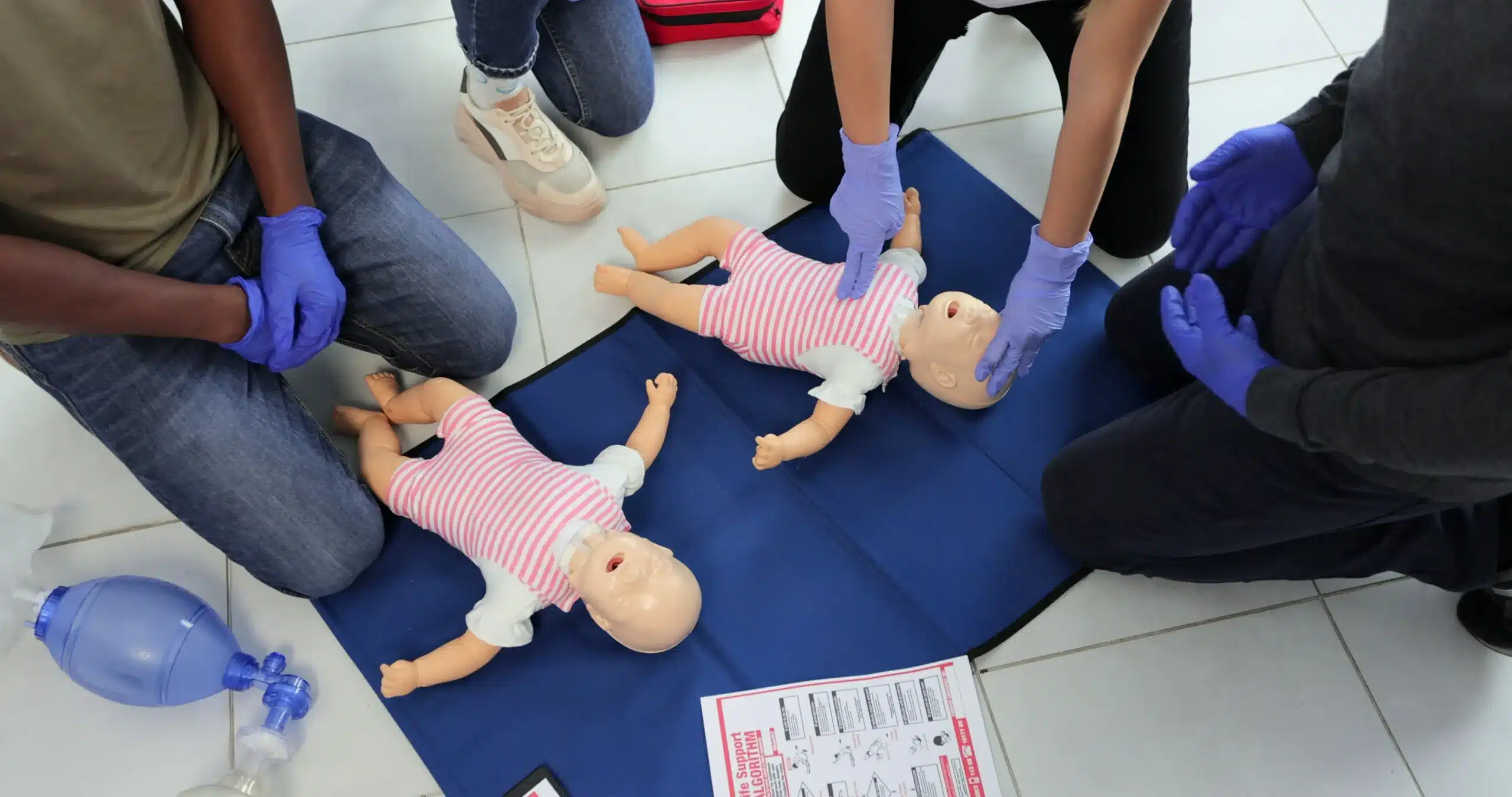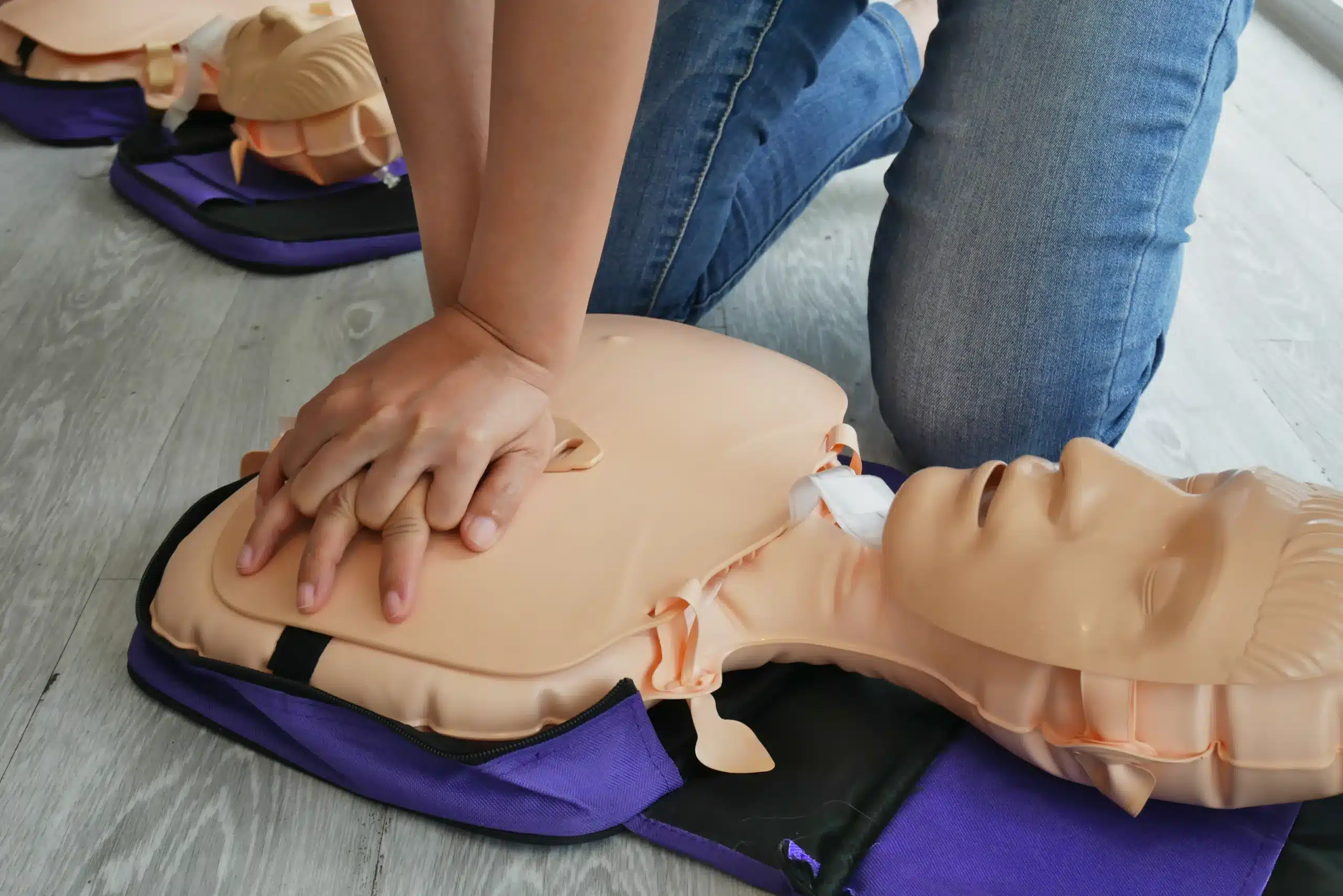Let’s be honest, living in San Francisco means being aware of potential emergencies, from earthquakes to urban fires. But awareness isn’t enough. Being truly prepared means having the skills and knowledge to act quickly and effectively when a crisis hits. That’s where emergency response training in San Francisco comes into play. These programs equip residents with the tools they need to protect themselves, their families, and their neighbors. In this article, we’ll explore the range of training opportunities available in San Francisco, highlighting the essential skills you’ll learn and how getting involved can build a more resilient community. Because in a city as dynamic as San Francisco, being prepared is more than just a good idea; it’s essential.
Key Takeaways
- Preparedness benefits everyone: Equipping yourself with skills like first aid and CPR through local programs like NERT strengthens your community’s ability to handle emergencies.
- Training builds confidence: Learning essential emergency response skills empowers you to take action in a crisis, potentially saving lives and minimizing harm.
- Stay informed and connected: Regularly refresh your skills and connect with your neighbors to build a more resilient community. Staying up-to-date on the latest protocols ensures your actions are effective.
What is Emergency Response Training in San Francisco?
Emergency response training equips residents with the skills and knowledge to handle crises effectively, ranging from everyday medical emergencies to large-scale disasters. These programs empower individuals to take immediate action, potentially saving lives and minimizing harm while waiting for professional help. In a city like San Francisco, with its unique vulnerabilities to earthquakes and other potential hazards, this training is especially critical.
Why Residents Need It
San Francisco encourages its residents to be prepared and take an active role in emergencies. The San Francisco Fire Department, in partnership with the community, established the Neighborhood Emergency Response Team (NERT) training program. This program recognizes that residents are often the first on the scene during emergencies. NERT provides free, hands-on training specifically designed for anyone living or working in San Francisco, making it a vital resource for community safety. The program has trained over 24,700 San Francisco residents since 1990, bolstering the city’s resilience in the face of potential disasters.
Key Components of Training Programs
Emergency response training programs in San Francisco cover a broad spectrum of skills. The NERT curriculum, for example, includes earthquake preparedness, hazardous materials awareness, and disaster medicine. Participants also gain practical experience in essential skills like using fire extinguishers, administering basic first aid, and performing light search and rescue techniques. The training emphasizes teamwork and organization, preparing individuals to work effectively together during a crisis. Ultimately, these programs aim to equip residents to be self-sufficient in a disaster, whether acting independently or supporting professional emergency responders.
Available Emergency Response Training Programs
San Francisco offers a variety of training programs to equip residents with essential emergency response skills. These programs empower individuals to take action during crises, support professional responders, and contribute to a more resilient community. Here’s a rundown of key training opportunities:
Neighborhood Emergency Response Team (NERT)
NERT is a free, city-sponsored program specifically designed for San Francisco residents and workers. The San Francisco Fire Department created NERT in response to community demand for disaster preparedness training. As the only organization offering this type of localized, hands-on training in San Francisco, NERT has prepared over 24,700 residents since 1990. Mayor Lurie has actively supported community emergency response training, emphasizing the importance of citizen involvement in disaster preparedness.
Community Emergency Response Team (CERT)
The Community Emergency Response Team (CERT) program offers training in basic disaster response skills. Managed by the California Governor’s Office of Emergency Services, CERT equips volunteers with skills in fire safety, light search and rescue, team organization, and disaster medical operations. This program provides a foundational understanding of disaster response procedures.
American Red Cross Training
The American Red Cross offers a wide range of training courses, from CPR and first aid to emergency preparedness. These courses give people the knowledge and skills to respond effectively during various emergencies. The Red Cross is a nationally recognized organization with a long history of providing essential training to communities.
San Francisco Department of Emergency Management Workshops
The San Francisco Department of Emergency Management plays a crucial role in coordinating city-wide emergency preparedness. The Department of Public Health, for example, has implemented comprehensive emergency response plans and training to ensure staff and partners are prepared for various emergencies. These initiatives contribute to a culture of preparedness across city departments.
Essential Skills You’ll Learn
Emergency response training programs equip you with practical skills to handle a range of crisis situations. From providing immediate medical assistance to understanding fire safety protocols, these courses cover essential skills. Let’s explore some key areas you’ll focus on:
First Aid and CPR Techniques
First aid and CPR are fundamental skills taught in nearly all emergency response programs. You’ll learn how to assess injuries, control bleeding, manage shock, and perform CPR for adults, children, and infants. These skills are invaluable in any emergency, enabling you to provide immediate care before professional help arrives. Safety Training Seminars offers a variety of American Heart Association certification courses in San Francisco, including CPR, BLS, ACLS, and PALS.
Fire Safety and Suppression
Understanding fire safety and suppression techniques is crucial for responding effectively to fire emergencies. You’ll learn how to prevent fires, use fire extinguishers, and understand basic fire behavior. This knowledge can help protect yourself, your family, and your community. For more in-depth information, explore the NERT training curriculum, which covers fire safety and hazardous materials awareness.
Search and Rescue Basics
In the aftermath of a disaster, search and rescue operations are critical. You’ll learn basic search and rescue techniques, including how to safely navigate damaged structures and locate survivors. While advanced search and rescue requires specialized training, the basics you learn in these programs can make a significant difference in the initial response phase. NERT training includes instruction on light search and rescue techniques.
Disaster Psychology and Team Organization
Emergencies can be chaotic and stressful. Training programs often cover disaster psychology, helping you understand the emotional impact of disasters and how to cope with stress during emergencies. You’ll also learn about team organization and incident command systems, which are essential for coordinating efforts and ensuring a structured response in a crisis. The NERT training program emphasizes understanding incident command systems and working effectively in a team.
How to Get Training
So, you’re ready to get trained in emergency response? Great! Knowing how to react in a crisis can make all the difference. Here’s how to find training programs in San Francisco:
Find Upcoming Training Sessions
San Francisco offers a variety of emergency preparedness training programs. A good starting point is the city’s Neighborhood Emergency Response Team (NERT) program. The San Francisco Fire Department has been training residents through NERT since 1990, demonstrating the city’s long-term commitment to community preparedness. As the San Francisco Standard reported, interest in these programs can increase after major disasters, so you’ll be joining many others looking to get involved.
Registration and Requirements
NERT offers free, hands-on training designed for San Francisco residents and workers. It’s a fantastic resource, and as noted on the official website for the City and County of San Francisco, it’s the only organization providing this specific type of training for free. Check their website for current registration requirements, which might vary based on the program.
Training Schedules and Locations
You can find NERT training schedules and locations on the SFGOV website. They’ve trained thousands of residents since the program began, offering a wealth of experience and a proven curriculum. You’ll find details about upcoming sessions and can choose a convenient location.
Community and Emergency Preparedness
When disaster strikes, your individual skills are essential, but a coordinated community response can make all the difference. San Francisco offers valuable resources to help you connect with your neighbors and build a more resilient city.
Build a Network of Prepared Neighbors
The Neighborhood Emergency Response Team (NERT) program emphasizes a “neighbor helping neighbor” approach. NERT training empowers residents to assist themselves, their families, and their community during emergencies. This grassroots strategy creates a network of prepared individuals, fostering a sense of community and ensuring support when it’s needed most. By connecting and planning together before an emergency, NERT teams build stronger bonds within San Francisco communities.
Enhance City-Wide Resilience
San Francisco aims to create a city-wide network of prepared individuals ready to respond to emergencies. NERT helps bridge the gap between families, neighbors, and official city emergency responders. This initiative strengthens San Francisco’s overall resilience, ensuring a broader base of trained residents can step up during a crisis. This focus on community involvement creates a powerful ripple effect, amplifying the city’s ability to handle emergencies effectively.
Improve Communication During Emergencies
Clear communication is crucial during emergencies. NERT offers free, hands-on emergency preparedness and response training designed for San Franciscans. This training equips residents with the skills to communicate effectively and coordinate their efforts, enabling swift action during a crisis. As the only organization in San Francisco providing this type of localized training, NERT plays a vital role in preparing the city for emergencies.
Specialized Training for San Francisco Risks
San Francisco’s unique urban environment and location on the seismically active Pacific Ring of Fire require specialized emergency response training. While general preparedness is crucial, understanding the specific risks our city faces helps residents prepare more effectively.
Earthquake Preparedness
Living in San Francisco means understanding earthquake risks. The city’s history includes significant seismic events, and being prepared is essential. NERT training focuses on practical steps you can take before, during, and after an earthquake, including securing your home, creating an emergency kit, and learning how to react safely during the shaking. Knowing what to expect and how to respond can significantly impact your safety and well-being during a seismic event. The NERT curriculum covers earthquake preparedness in detail.
Urban Fire Response
Urban fires present unique challenges due to the density of buildings and populations. The NERT program equips San Francisco residents with the skills to respond effectively to urban fires, emphasizing fire safety, prevention, and suppression techniques. Learning how to use fire extinguishers, understand fire behavior, and assist with evacuations can make a critical difference in protecting yourself, your family, and your neighbors.
Hazardous Materials Awareness
Given San Francisco’s diverse industries and urban landscape, hazardous materials incidents are a potential risk. NERT training includes hazardous materials awareness, teaching residents how to identify, avoid, and report potential hazards. Understanding the risks associated with common household chemicals, industrial materials, and potential leaks or spills is crucial for protecting yourself and your community.
Maintain Your Emergency Response Skills
Once you’ve completed your initial emergency response training, staying sharp is key. Emergencies are dynamic, and best practices evolve. Regularly refreshing your skills and knowledge ensures you’re prepared to respond effectively when it matters most.
Refresher Courses and Continuing Education
Think of your emergency response skills like any other skill—consistent practice keeps you proficient. Refresher courses reinforce what you’ve already learned and introduce updated procedures. The San Francisco Fire Department encourages NERT graduates to take advantage of these opportunities. Continuing education also helps you adapt to new challenges and maintain your confidence in a crisis. Consider revisiting core skills like CPR and First Aid periodically. Even seasoned professionals benefit from regular practice.
Stay Informed About New Protocols
Emergency response protocols aren’t static. They change based on new research, evolving threats, and lessons learned from past events. Staying informed about these updates is crucial for providing safe and effective assistance. NERT is a valuable resource for staying up-to-date on local protocols. Subscribing to relevant newsletters, following reputable organizations on social media, and attending community workshops can also keep you informed. The San Francisco Fire Department emphasizes community engagement to maintain preparedness, and staying informed is a key part of that. Knowing the latest procedures ensures your actions align with current best practices, maximizing your positive impact during an emergency.
Integrate Emergency Preparedness into Daily Life
Knowing how to perform CPR or administer first aid is a valuable skill, but true emergency preparedness goes beyond individual actions. It involves creating a safety net that includes your family, workplace, and community. This holistic approach ensures you’re ready to face any challenge, from a house fire to a city-wide emergency.
Create a Home Emergency Plan
Building a home emergency plan isn’t about anticipating every possible scenario; it’s about establishing a framework that helps you adapt and respond effectively to any disruption. Start by having open conversations with your family about potential risks and how you’ll address them together. The San Francisco NERT program provides a helpful framework for these discussions, encouraging residents to plan for survival with their neighbors. This community-based approach, initiated by residents and supported by the San Francisco Fire Department, underscores the power of collective action in times of crisis.
A comprehensive home emergency plan should include:
- Communication Plan: Designate an out-of-state contact person everyone can check in with if separated. Ensure everyone in the household knows this person’s contact information.
- Evacuation Routes: Identify multiple escape routes from your home and establish a meeting point outside the neighborhood. Practice these routes regularly.
- Emergency Kit: Assemble a kit with essential supplies like water, non-perishable food, first-aid supplies, flashlights, and a battery-powered radio. Keep it easily accessible.
Encourage Workplace Readiness
Just as you prepare your home, encourage a culture of preparedness in your workplace. A well-defined emergency plan ensures business continuity and protects your colleagues. The San Francisco Department of Public Health emphasizes the importance of comprehensive emergency response plans, training, and regular drills to foster a prepared workplace. The NERT program, having trained over 24,000 San Francisco residents, offers a valuable resource for workplace training initiatives.
Here’s how you can promote workplace readiness:
- Advocate for Training: Encourage your employer to offer regular emergency response training, including first aid, CPR, and fire safety.
- Develop a Workplace Plan: Work with your colleagues to create a plan that includes evacuation procedures, communication protocols, and a designated meeting point.
- Promote a Culture of Preparedness: Regularly discuss emergency preparedness with your team and encourage open communication about safety concerns.
Long-Term Benefits of Community Involvement
Getting involved in emergency response training offers significant long-term advantages, strengthening both individual preparedness and the overall resilience of the San Francisco community. It’s about more than just acquiring skills; it’s about fostering connections and building a safer environment for everyone.
Increase Neighborhood Resilience
When disaster strikes, initial responses are critical. Equipping residents with the skills and knowledge to handle emergencies can significantly increase a neighborhood’s resilience. The San Francisco Fire Department recognized this need and established the Neighborhood Emergency Response Team (NERT) training program. This program empowers residents to be self-reliant during major disasters, creating a network of first responders within the community itself. NERT has trained thousands of San Franciscans, bolstering the city’s ability to cope with and recover from emergencies. This proactive approach reduces reliance on external resources, which can be strained during large-scale events. The program’s success highlights how community-based training can strengthen a city’s overall disaster preparedness.
Enhance Social Cohesion
Emergency preparedness isn’t just about individual skills; it’s about teamwork and community. NERT provides a framework for neighbors to connect, plan, and train together. This shared experience fosters a sense of community and strengthens social bonds. Knowing you can rely on your neighbors in a crisis creates a powerful sense of security and unity. NERT training is free and accessible to anyone who lives or works in San Francisco, making it a truly inclusive community-building activity. The program emphasizes collaboration and communication, essential elements for effective emergency response.
Build Trust Between Residents and Emergency Services
Community involvement in emergency response training helps bridge the gap between residents and professional emergency services. When residents understand the challenges and complexities of emergency response, they develop a greater appreciation for the work of first responders. This shared understanding builds trust and facilitates smoother collaboration during actual emergencies. The creation of the NERT program was a direct response to community demand, demonstrating the power of resident involvement in shaping emergency preparedness strategies. This collaborative approach ensures that training programs are relevant to community needs and strengthens the partnership between residents and emergency services. Ultimately, this partnership benefits everyone by creating a more coordinated and effective response to any crisis.
Related Articles
- First Aid in San Francisco: Your Guide to Training & Certification – San Francisco CPR Classes
- CPR Training in San Francisco: A Complete Guide – San Francisco CPR Classes
- American Red Cross SF: A Guide to Services & Volunteering – San Francisco CPR Classes
- Your Guide to CPR First Aid Recertification in San Francisco – San Francisco CPR Classes
- First-Aid Training in SF: Your Complete Guide – San Francisco CPR Classes
Frequently Asked Questions
What is the difference between NERT and CERT training?
NERT (Neighborhood Emergency Response Team) is specifically designed for San Francisco residents and administered by the San Francisco Fire Department. It focuses on the specific hazards and challenges unique to San Francisco. CERT (Community Emergency Response Team) is a more general program managed by the California Governor’s Office of Emergency Services, providing a broader foundation in disaster response. While both programs equip individuals with valuable skills, NERT offers a more localized and tailored approach for San Franciscans.
How can I fit emergency response training into my busy schedule?
San Francisco offers various training options to accommodate different schedules. NERT, for example, holds classes throughout the year, often on evenings and weekends, to make it accessible to working individuals. The American Red Cross and other organizations also provide flexible scheduling options, including online and in-person courses. Check their websites or contact them directly to find a schedule that works for you.
What if I have a disability or specific needs that might affect my ability to participate in training?
Training programs strive to be inclusive and accommodate diverse needs. Contact the organizers of the specific program you’re interested in to discuss your situation. They can often provide modifications, assistive devices, or alternative arrangements to ensure you can fully participate. Don’t hesitate to reach out – they are there to help.
Besides formal training, what are some simple steps I can take to improve my emergency preparedness?
Start by creating a home emergency plan with your family, including communication strategies, evacuation routes, and a well-stocked emergency kit. Secure heavy furniture to prevent injuries during earthquakes. Know the locations of utility shut-off valves in your home. These small steps can make a big difference in your safety and preparedness.
How can I get more involved in my community’s emergency preparedness efforts beyond individual training?
Connect with your neighbors and explore opportunities to collaborate on emergency planning. Consider joining a NERT team in your area. Participate in community drills and exercises. By working together, you can create a more resilient and prepared community. Many neighborhoods have existing groups or initiatives you can join, or you can start your own.


